Waraku is a Japanese Budo discipline that was developed by Hiramasa Maeda sensei and is based on the many techniques and philosophies he has studied. The name Waraku has two meanings, peace and goodness forever. Waraku brings mental, physical and emotional balance to the individual as well as their surroundings. The other meaning is circle, spiral and intersection. The movement of energy in Waraku is based on the shape of the spiral, a very powerful shape found everywhere in nature from the double helix of DNA, motion of atomic and subatomic particles, Fibonacci spiral and many more. This shape is powerful because it starts from a core point and spirals out, making overlapping circles which do not lose momentum and energy like only one circle would, the energy and momentum is carried and multiplied.
In some movements in Waraku, a bokken or wooden sword is used. This wooden sword is a physical representation of the Tsurugi. Tsurugi is written using kanji that represent water, water, fire, which is an important concept in Waraku. Joining of water and fire represents the spark of life. Tsurugi means the power of united opposites, to make symmetrical what comes before and what comes after, what is up and what is down, what is right and what is left.
The basic techniques of Waraku are Hachariki and Hachiken.
Hachiriki or Eight Energies, is practiced with only the body.
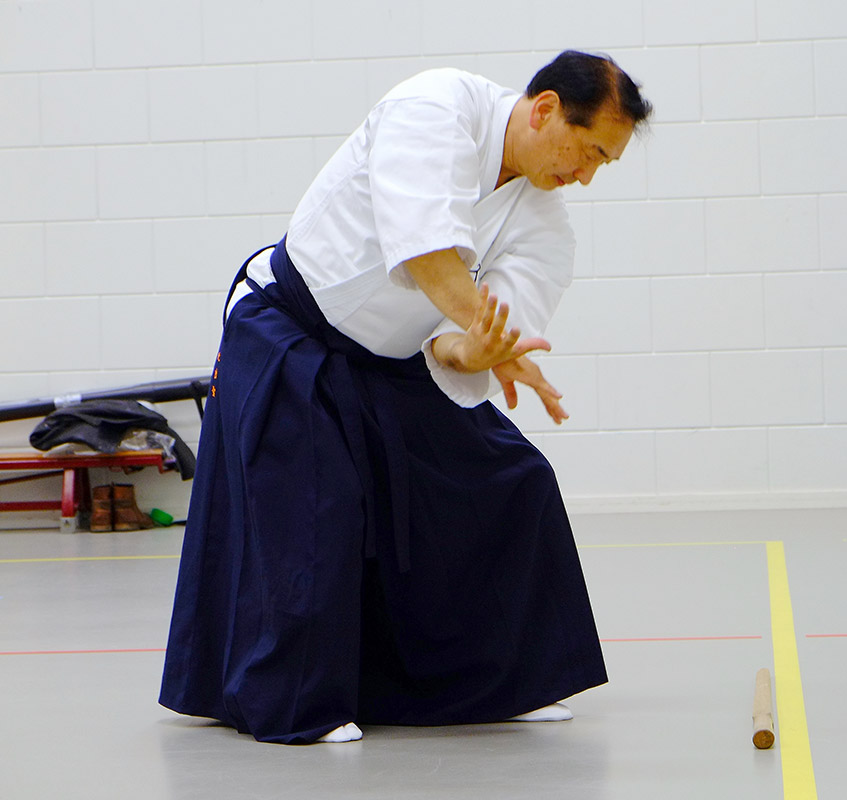
Hachiken, or Eight Swords, which is fundamentally the same as Hachiriki, but done with the Tsurugi.
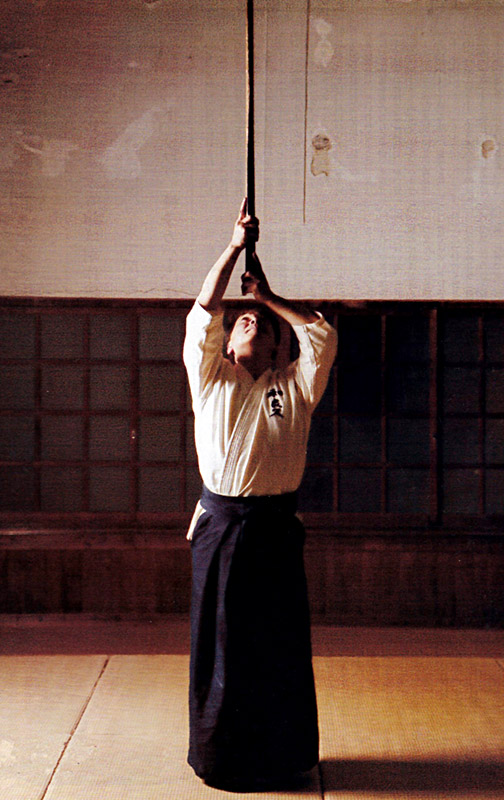
The Tsurugi is used, like the hands, as a guide to how the body should be moving, and if it is taken away the hands should still be in the same position as Hachiriki. The Tsurugi is also a visual representation of the energy movement, and the extension of that energy from the body. It is also used when practicing with a partner so there is no bodily contact. When practicing with a partner, even if there are no bad intentions, at times hard physical contact can produce bad feelings between the two people. With the Tsurugi, the energy that is passed between the people is passed through an outside object that is connected to the body, so there are no bad feelings.
From Hachiriki and Hachiken come 75 ken, or 75 swords, which are combinations of the movements of Hachiken.
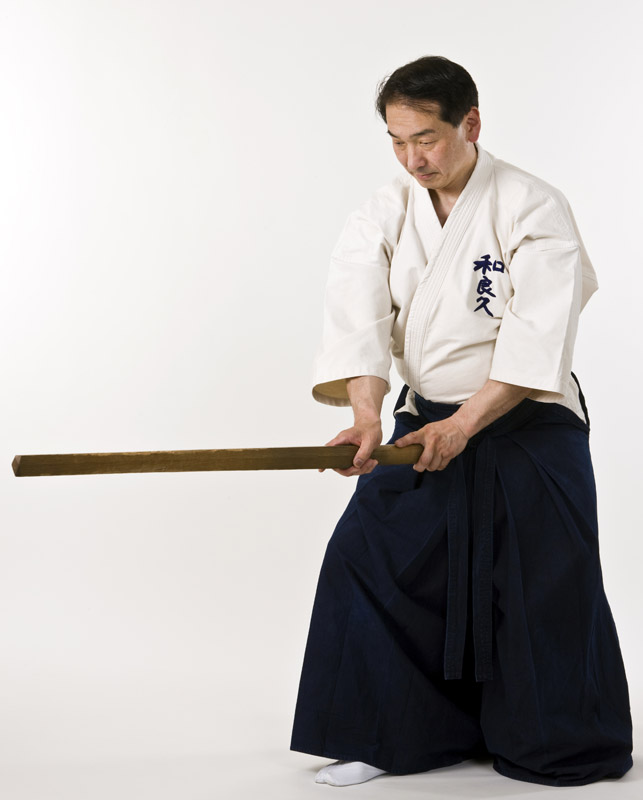
The movements of Waraku help align and balance the body and develop energy and strength from the inside out. They utilize the core of the body (the pelvis, lower back, and lower abdomen) and focus on aligning three energy points, or Tanden, which run through the centre of the body.
Another element of Waraku is Chinkon – a calm, relaxed, yet engaged and alert state. Awareness is inside and outside of the body at the same time. Inside the body the heartbeat slows, body temperature is neutral, and sense of the physical body is magnified. At the same time, because the mind is calm, outside energies are felt more as well. Especially if the eyes are closed, the other senses become more acute, for example hearing and smell become more sensitive. If other people are around, their presence can be felt more, and air movement can be felt more.
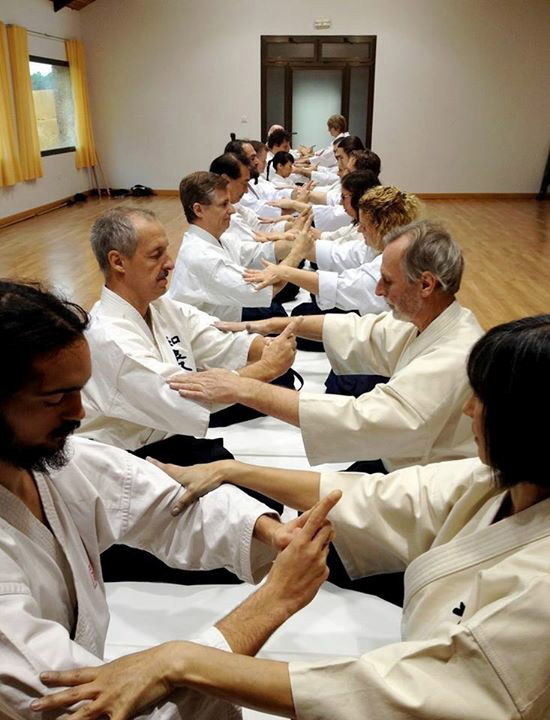
The practice in Waraku is called Keiko, which means remembering/returning to the origins through exercise and meditation.
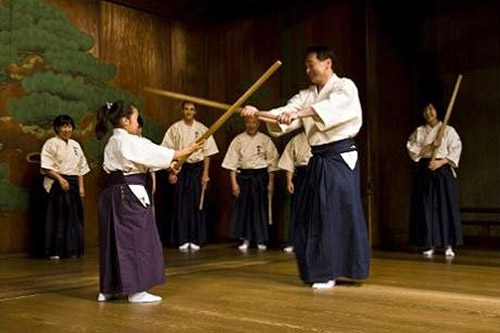
There are many other aspects of Waraku than just the physical: mental, emotional and spiritual aspects that are all connected. The skills of Waraku develop the core of the body, which includes the pelvis, lower back, and lower abdomen. The core is the body's centre and balance point, if the core is in balance and alignment, the rest of the body can follow. The balance that comes from the core creates a base of energy and strength for the body. This strength is not only physical, although a lot of physical power can originate in the core, but a mental and emotional energy and strength develop as well.
There are three energy points, Tanden, that run through the centre of the body. By aligning these three points, including the core, the body becomes more balanced and stable.
The energy points are the Jouden, Chuden, Kaden or upper, middle and lower energy points, respectively. These three energy points are also control points for the directions the body moves: horizontal, vertical, and front to back. The upper energy point, Jouden, is located in the centre of the forehead above the bridge of the nose and controls horizontal movement. The middle energy point, Chuden, is located at about the solar plexus, and controls forward and backward movement. The lower energy point, Kaden, is located about 5 centimetres, or 1,5 inches below the belly button, in the middle of the lower abdomen, and controls vertical movement.
When these energy points are aligned, energy flows easily in and out of the body. The most powerful one is Kaden, also known as Hara.
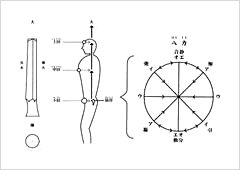
The basic rule of Waraku is: "Do no harm to yourself or others, do good to yourself and others". The skill acquired through Waraku is therefore not to harm people but to heal them physically and mentally.
Quoted from Hiramasa Maeda sensei's in interview with Aldo Shinnosukè Ricciotti
In the practice of Waraku, sounds are used. These sounds are based on Japanese teaching of Kototama.
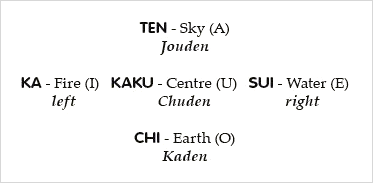
The notion of “Kototama” believes that sounds can magically affect objects, and that ritual word usages can influence our environment, body, mind, and soul. The mother sounds (the vowels a, e, i, o, u) form a spiral and correspond to four points around the body where energy is gathered during the movements. These points are named after the elements: heaven, earth, fire and water. The centre, envisioned as a fifth point or core that intersects all points, corresponds to the vowel u.
Waraku can be done alone or with others. Because muscles strength, body size, height, age, etc are not important in Waraku, anyone can practise Waraku. The practice with others is another form of communication, giving and receiving of energies, learning how to interact with people. Waraku teaches us how to be in balance with ourselves and in relationships with others.
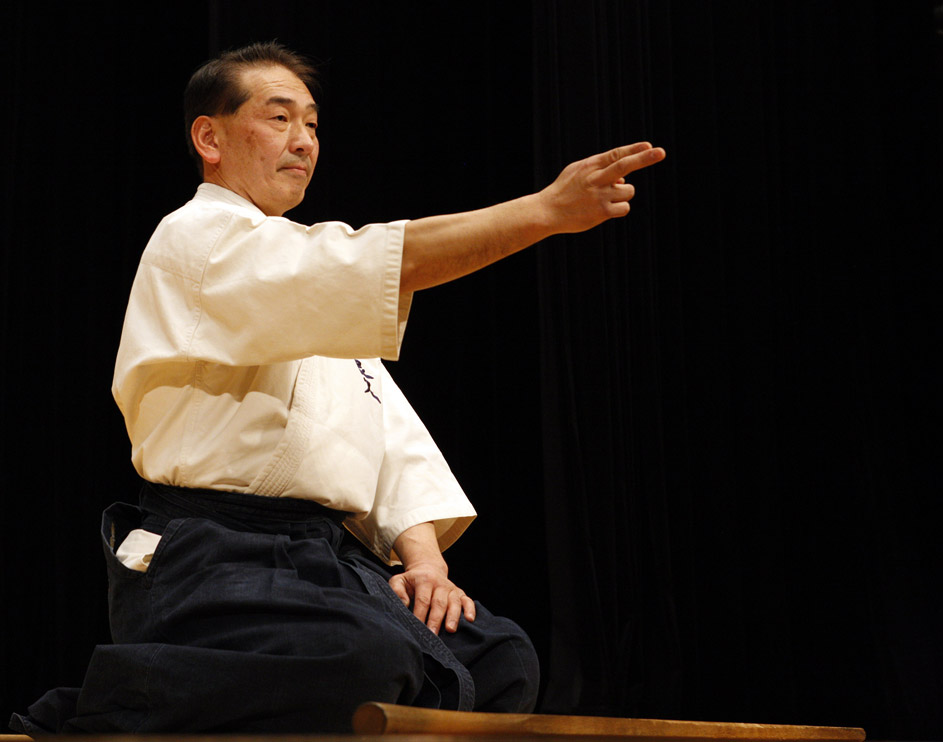
The skills learned and developed in dojo should be used in everyday life. The more and longer Waraku is practised, the more the effects are felt and noticed in daily life.
"Whoever uses the energy of light is able to cure others. Learning the techniques of Waraku also means learning to develop the capacity to heal wounded hearts and bodies. I think it is everybody's duty to mantain his or her body and spirit in good health. With Waraku I am teaching people to do that."
Quoted from Hiramasa Maeda sensei's contribution to "Torino Spirituality", 2009
True Budo is the way to learn the laws of nature that are deeply related to all aspects of human culture, i.e. religion, language, arts and politics...
Waraku is a Japanese Budo that was developed by Hiramasa Maeda sensei and is based on the many techniques and philosophies he has studied.
Let's experience Waraku through team building. Waraku can help your employees or management in improving resilience, wellbeing, enhancing working relationships and performance, including leadership, organisational transformation, creativity and innovation.